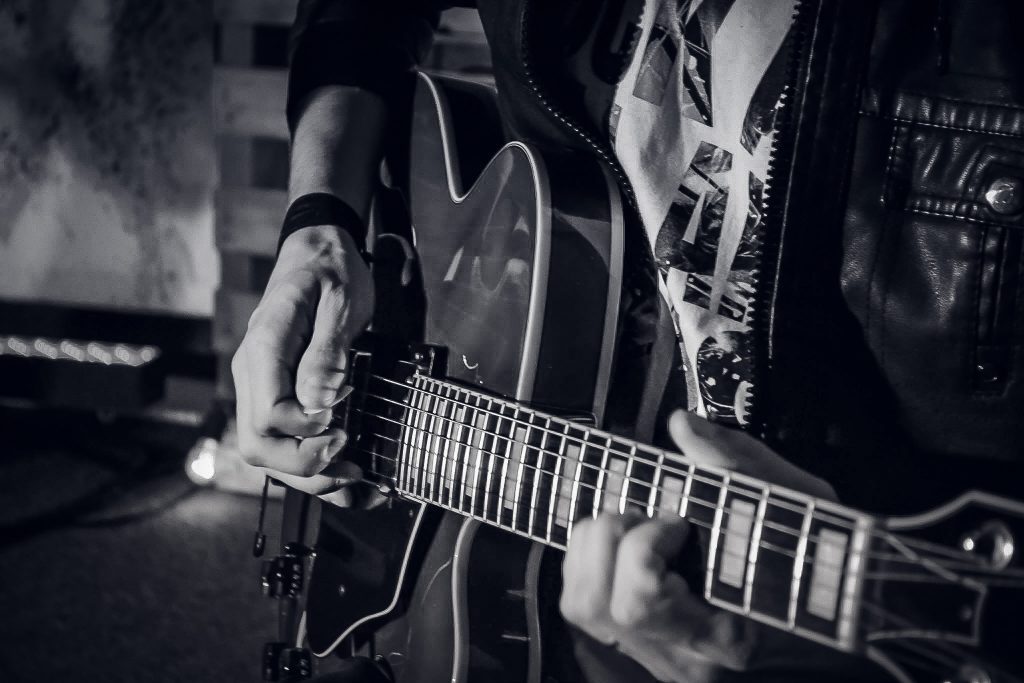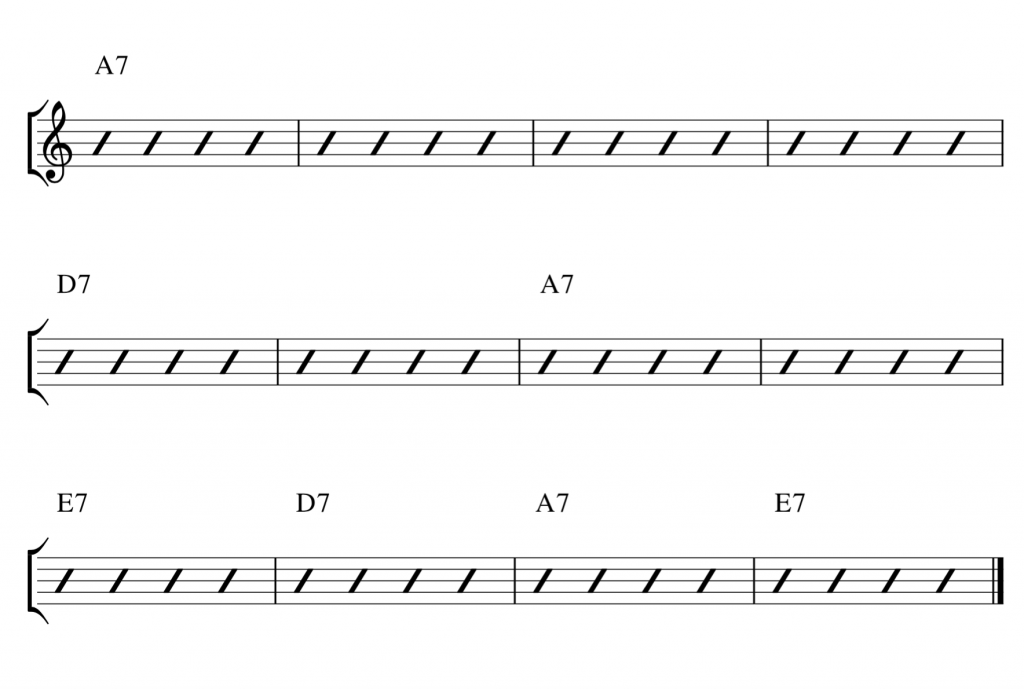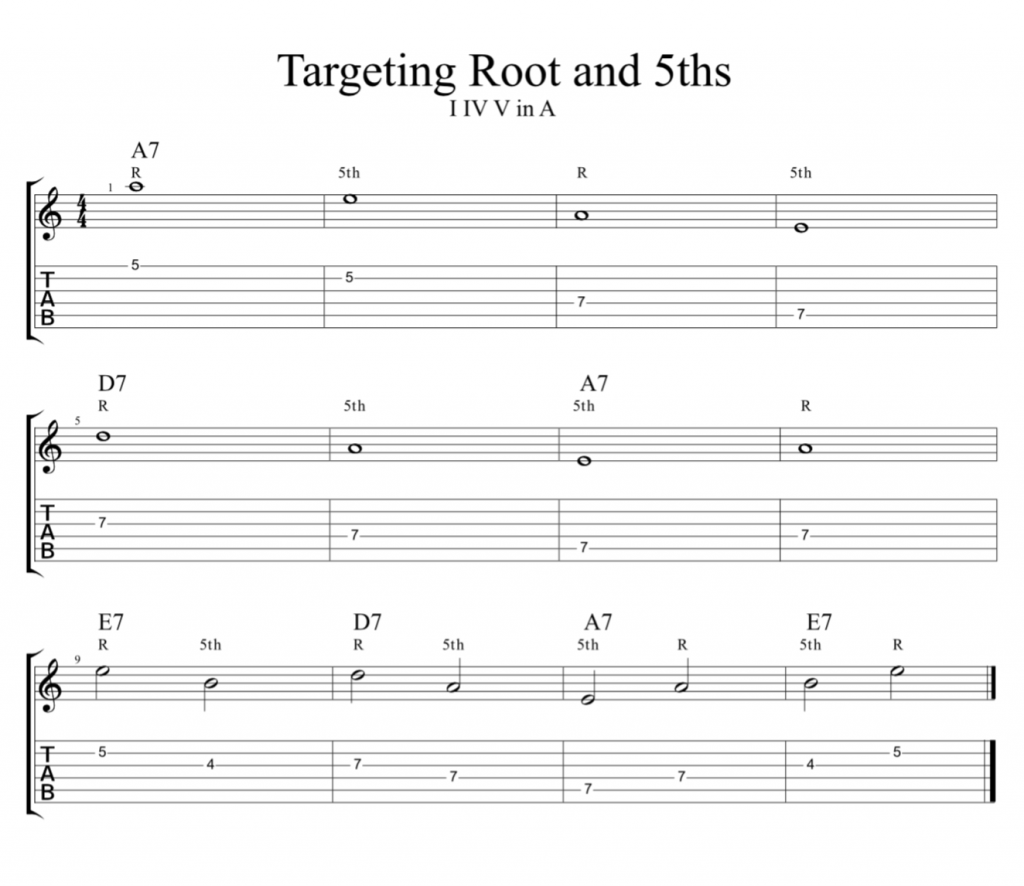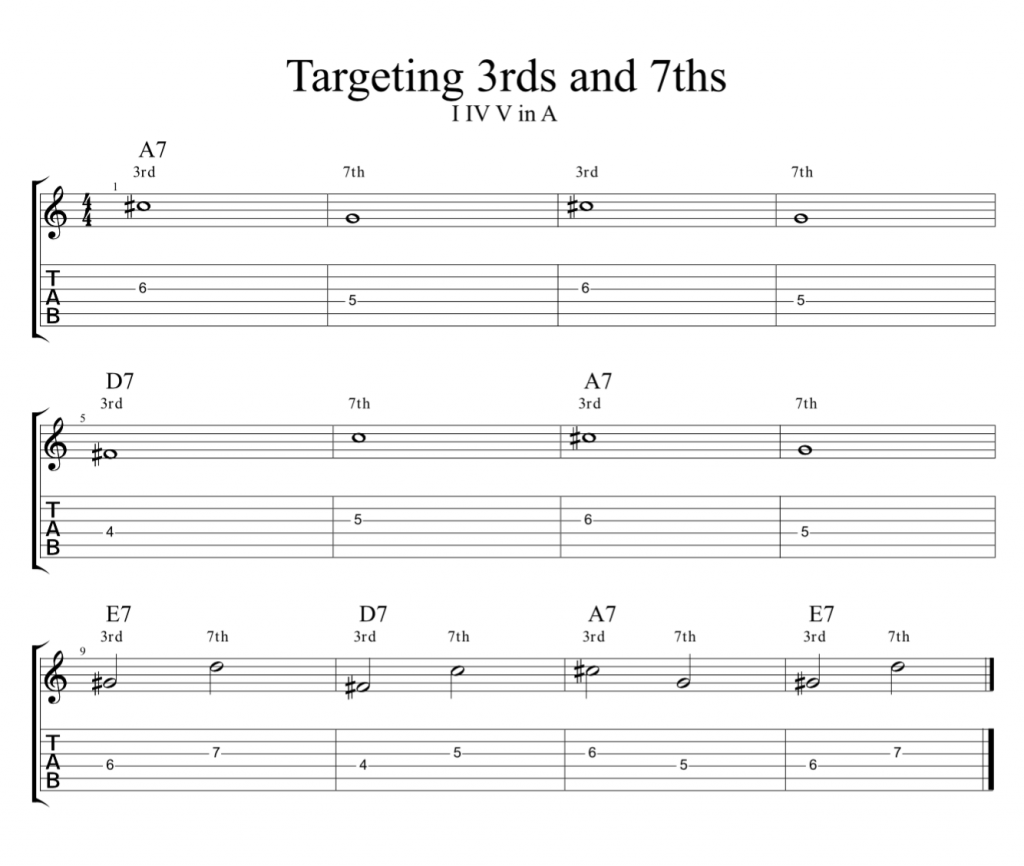
Improvisation is a key element of guitar playing and students will need to learn how to improvise in order to jam efficiently with other musicians. Learning to improvise and expand your improvisational skills is among the most important goals guitar students request to learn.
Improvised solos consist of a wide vocabulary of playing styles and skills. A mixture of rhythm, groove and feel, intelligent and informed note choices, techniques, melodies, scales, and length of a solo are all important elements to consider when improvising.
In this lesson we focus on a twelve-bar blues progression and use the I IV V structure to develop our ability to improvise using chord tones. The focus here is to play the root, fifth, third and seventh of each chord.
By targeting these specific notes, we build our ability to ‘hear’ the sound of the chords within the blues progression and outline the chord tones. By practicing this exercise we internalise the character and duration of each chord, which is a fundamental step in the process of memorising any chord sequence.
The basic twelve-bar blues progression in the key of A has the following chord sequence:

All chords in this twelve-bar example share the same harmonic structure. Each chord consists of a:
Root – Major 3rd – Fifth – Minor 7th (R 3 5 b7)
In this first exercise we will target the root (R) and the fifth (5th) for each of the respective chords in the twelve-bar progression.
We will target the following notes over each chord:
- A7 = A and E (Root and 5th)
- D7 = D and A (Root and 5th)
- E7 = E and B (Root and 5th)

In this second exercise we will target the major third (3rd) and minor seventh (7th) for each of the respective chords in the twelve-bar progression.
We will target the following notes over each chord:
- A7 = C# and G (3rd and 7th)
- D7 = F# and C (3rd and 7th)
- E7 = G# and D (3rd and 7th)

I advise you to play along to a backing track in order to hear the character of each guide tone over each chord in the progression.
There are many possible variations that be derived from this approach. Experiment with different rhythms and work through different positions on the fretboard or in pairs of strings until you have internalised this approach.

